Superbells® Calibrachoa hybrid
Early Spring through Fall Finish. Standard PPP.
For all sizes of containers, pinch the liner 1–2 weeks after transplant; for containers larger than 6” and for hanging baskets, trim around the edge of the container as needed prior to spacing or hanging of the baskets. 5-10 ppm Sumagic or a B-9/Cycocel (2500/750) tank mix is effective. Red and Yellow Chiffon are very responsive to PGRs so lower rates should be used. Use 500 ppm Florel® or 1-3 ppm Bonzi® drench on hanging baskets and larger containers to promote branching.
General pest and disease practices as listed in notes. Calibrachoa are sensitive to pythium, phytopthera, and thelaviopsis. Superbells have higher levels of tolerance to these diseases than other Calibrachoa, however, maintaining proper pH (5.5-5.8) and good sanitation practices will help alleviate problems. Increased air circulation, proper water management and good soil porosity are also critical. Scout regularly for aphids which can be problematic. Be sure to check hanging baskets that are hanging high, it can be easy to forget to scout for insect problems with pots high in the rafters. When selecting Supberbells we screen for disease resistance to Thielaviopsis; Pythium and Phytophthora.
Preventive fungicides are recommended two weeks after transplant. It is strongly suggested that growers use caution when using Medallion due to the potential leaf spotting in Calibrachoa. -Requires high light in production. -Needs 200 ppm fertilizer for optimal growth. -The Superbells series is constantly evaluated for pH sensitivity, this is considered a major issue for the crop, so all trialing evaluates response to high pH and selects away from sensitive clones. It is still best to keep pH below 6.0. -'Red' and Yellow Chiffon are very responsive to PGR's, so lower rates should be used. -Cold is a good natural growth regulator. -Yellow growing tips is often an indicator of high pH. -Blackberry Punch and Lemon Slice is more sensitive to rooting issues, water management is critical. -Superbells Blue, Superbells Scarlet, Superbells Blackberry Punch and Superbells Dreamsicle can be more upright, especially in lower light conditions. They may need extra pinching and PGR's to control growth. -Superbells Apricot Punch is very early to bloom, you may want to remove some initial flowers to promote plant growth.
Key points
- Maintain proper pH and E.C levels
- Disinfect greenhouse area prior to introduction of plant material
- Grow in well-aerated, well-drained mixes such as high peat/perlite/bark mixes
- Once established grows best outdoors
- Florel @ 500ppm works well in conjunction with no-pinch on the 4-4.5" pot size.
Moisture & fertility
pH: 5.5-5.8
E.C (2:1 Extraction Method): .6-.9
- Decide on a porous media that will not hold an over abundance of moisture. Calibrachoa tend to produce roots quickly and maintain a healthy root system in a peat-based media blended slightly with bark and perlite. Keep plugs moist upon transplant into the new media to maintain contact between plant roots on the liner and the new media. Begin allowing the media to dry between irrigation's once the roots have formed through the new mix. It is imperative not to overwater the plants once they have established themselves in the new media. Do not stress plants by allowing them to wilt heavily.
- Constant feed 200-250ppmN of a balanced feed supplying 25-30% ammoniacal nitrogen to promote fast growth and lush green color. Reduce ammonium levels if you are starting to get some stretch. Check your water quality with a trusted lab and use fertilizers based on your water quality. Fertilizer formulations commonly used on Proven Winners are 20-10-20, 15-3-16, 15-5-15, 17-5-17, and 21-5-20. Most Proven Winners benefit from elevated levels of iron (1-2ppm).
Temperatures
- Grow on moderately warm (@ 68º-70ºF day-65º-68ºF night) to get root system established quickly. Once the plants are rooted out and are starting to fill out the pot drop the temps to @ 63º-65ºF day and 63º-65ºF night to slow up the growth and harden off the plant. Calibrachoa require high light levels (+ 5,000ftc) to promote compactness and to accelerate their natural branching capabilities. If capable use a negative DIF to finish the crop by running days @ 55ºF and nights @ 62º-65ºF. This will improve overall crop quality. Superbells do tremendously well when "hardened off" outdoors in the spring months. Superbells can tolerate a mild frost +/- 28ºF.
Light
- Superbells do best in full sun inside the greenhouse and outdoors.
Growth Regulation
- Use Florel @ 500ppm on the 4-4.5" product and no-pinch! To control plant shoot elongation, B Nine @ 2500ppm + Cycocel @ 500ppm can be used as a tank mix for northeastern growers. To the south and west, higher rate of either of these chemicals may be needed.
Insect & Disease control
- Watch for fungus gnats, thrips, and aphids. Fungus gnats especially, and aphids secondarily are the most common pests of Calibrachoa. Fungus gnat larvae can be devastating as they can burrow up the stems and cause plant collapse and death or weaken the plants to be susceptible to disease. Do not allow standing water or algae to form on floors, tables, or media. A potato wedge placed on top of the media is a good way to check for larvae populations. Control moisture in the media and use larvaecides to suppress any larvae populations. Thrips are most prevalent when blooms are forming. Control populations prior to introducing the crop.
- Drench with a broad-spectrum fungicide once the roots have reached the edge of the pot. Calibrachoa are sensitive to pathogens such as pythium, phytophthora, and thielaviopsis. Use sterile growing medium and start with a clean, disinfected greenhouse. Disinfectants such as bleach, Greenshield, and ZeroTol are all effective. Foliar diseases are not prevalent in this crop.







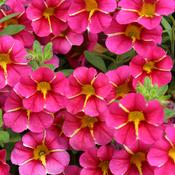

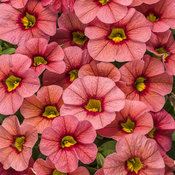
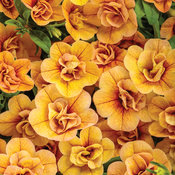
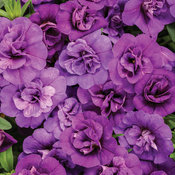
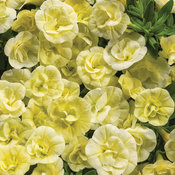
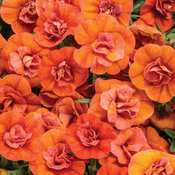

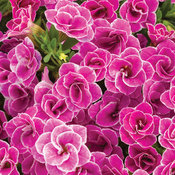
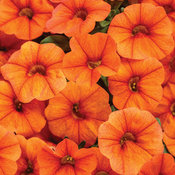
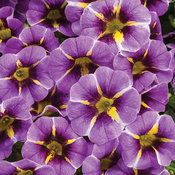
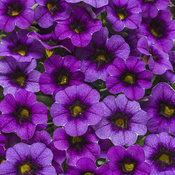

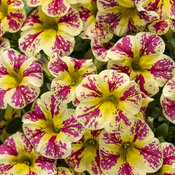
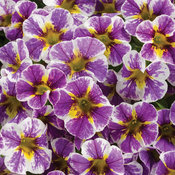
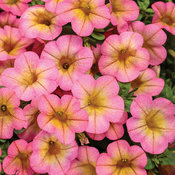
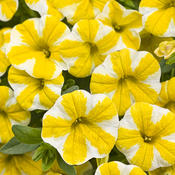
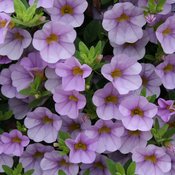




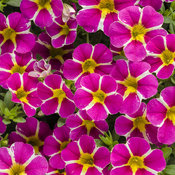


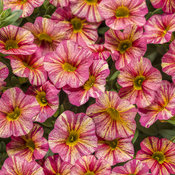
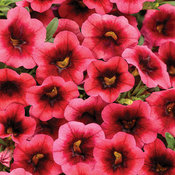
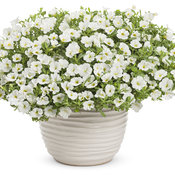
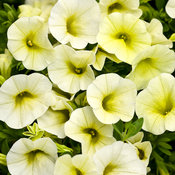

 Sign up for our grower and retailer emails!
Sign up for our grower and retailer emails!
